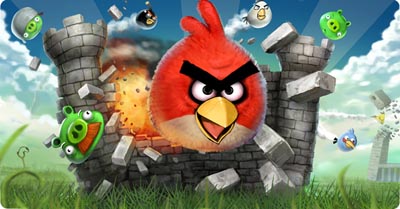I’m still on the first level (not a big-time gamer) and I’m not really much further into Level 1 than my 3-year old granddaughter. Nevertheless, I’m a big fan of the Rovio game. Just probably not for the same reasons as the other 200 million people that have downloaded the game. There’s a lot that can be learned from a few Angry Birds.
According to a recent article on CNNMoney, the downloads have doubled in just the last 3 months and the game is now available on over 30% of all smart phones. Pretty impressive for a consumer product that launched less than 18 months ago. So, what can consumer products companies learn from our avian friends? Design your business model for flexibility!

Keep the Core Value Proposition Simple. Angry Birds has an easy to understand, simple value proposition: enjoy a fun game with a simple user interface, with increasing difficulty as your skill increases, and that’s easy to start and stop, for hours of (almost addictive) mobile game play. Not a lot of frills. WYSIWYG.
Pursue Channel Ubiquity. You can get Angry Birds on at least 25 different platforms. While it may have started on the iPhone, you can also get it on the iPad, Google’s Android OS, an e-reader, Playstation 3, the MAC, a PC version, the list goes on.
Monetize According to the Channel. Each channel represents a different market. For the various channels, there are free and paid versions, ad-supported versions, seasonal versions, etc. Each has its own price point. You’ll pay more for it on your desktop than on your smart phone. The primary point: monetize the value proposition according the market and distribution channel.
Market the Brand Equities for Additional Cash. Just for fun, go to this link and check out the 16” Angry Birds plush toy. Looks fun! Or you can get a t-shirt, a clip-on, a case for your iPhone, lunch boxes, red flip flops, ties, or a backpack. I kind of like the socks. Apparently, there’s even an Angry Birds movie in the works.
Rovio has taken Angry Birds from nothing in December, 2009 to an expected $140 million and a recognized brand in 2011. And they’re doing it with a flexible business model designed around a simple, compelling value proposition. Other lessons are available from studying Rovio but that’s enough for now. What lessons would you cite?